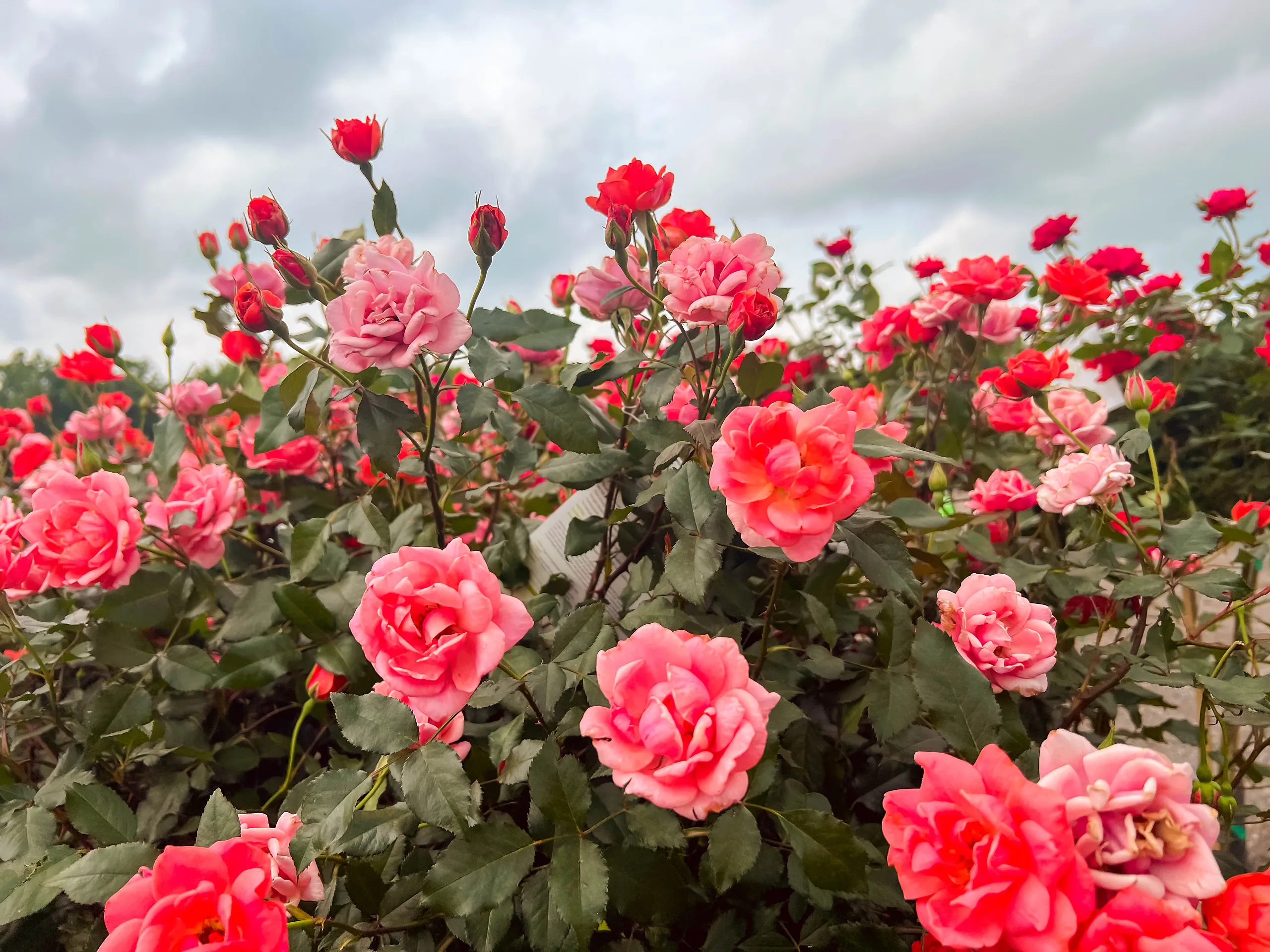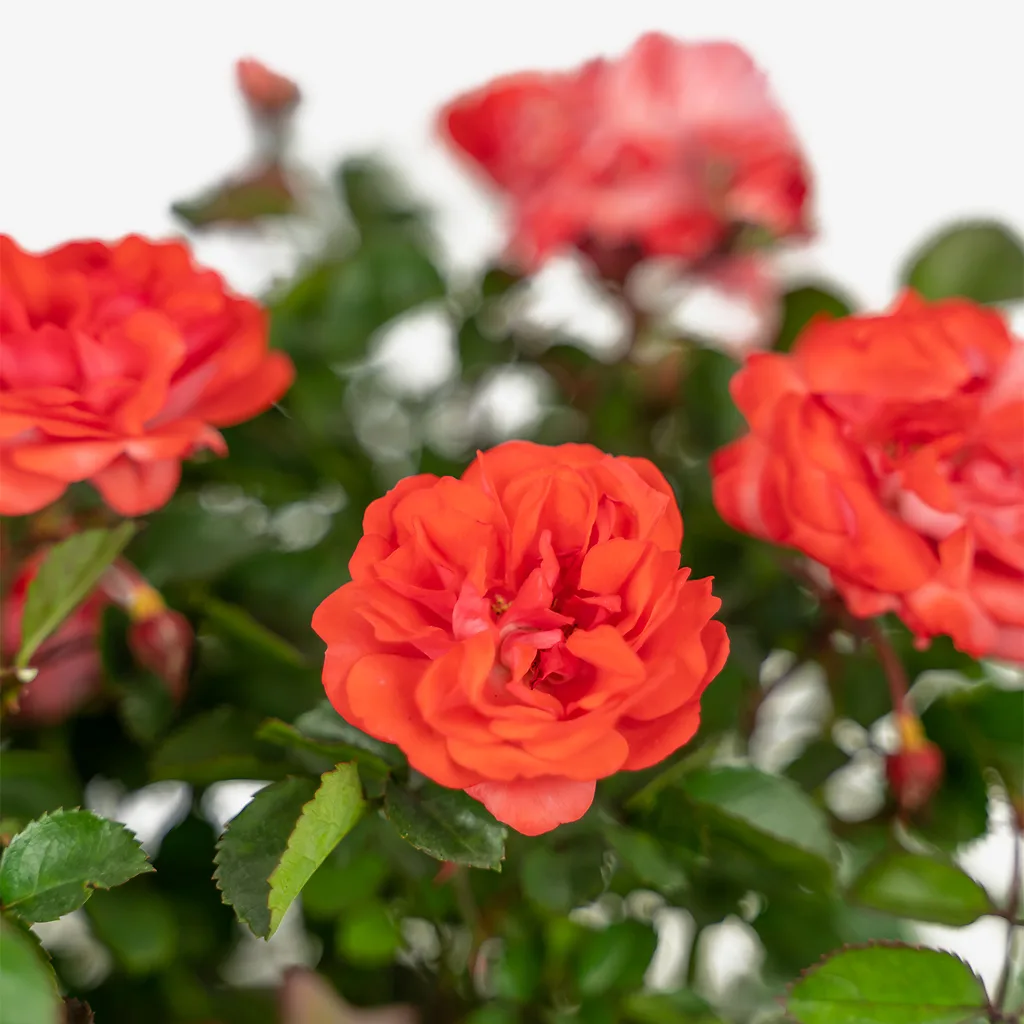
Written by s • Understand the Many Types of Roses
About one billion rose blossoms find their way into florist shops around the world, and in America alone about 30 million are sold on just one day – February 14. These specialized blooms have planted a vision in our minds of what ‘roses’ look like, but they are so much more than that. Wild roses are small, with just five petals forming a shallow bowl around a fluffy yellow center. Many of them have no particular fragrance, and most are pink. Centuries of work by dedicated professional and amateur breeders has taken those humble beginnings and given us a profusion of varieties to enjoy – and enjoy them we do, not just in that Valentine’s bunch, but as important elements in our gardens, making the rose season a high point in the gardening calendar.
Not so long ago most of the roses in gardens looked a lot like those roses in the florist – large, with many petals, and a high, pointed center. Keen gardeners pruned, fertilized and sprayed to produce the perfect bloom, but garden roses today are very different. They bring months of color and interest to your garden with only a minimal degree of attention – if you make the right choices. To get a better idea of what is available, so that you can make those smart choices for your own garden, let’s take a step back and look at the world of roses.
Old-fashioned Roses
Wild roses are mostly great sprawling creatures, with long thorny branches and a brief season of bloom, with small, 5-petaled blossoms. But centuries ago more beautiful forms were discovered in both Europe and China, and many of them are still with us today. These are often large bushes, and they bloom for a few weeks in June. The flowers are undoubtedly beautiful, sometimes fragrant, and they have a powerful mystique about them. If you are looking for a garden hobby, and you have a large, sunny garden and rich soil, collecting and enjoying these beautiful plants can be very worthwhile, but for ordinary gardeners the return is limited, so let’s move on.
Hybrid Tea and Grandiflora Roses
These are the roses mostly sold in florists, and the flower that looks like ‘a rose’ to most people. These were a great breakthrough in the 19th century, because they incorporated the recently-discovered Chinese tea rose, which bloom sporadically throughout the summer. By blending it with old-fashioned roses new varieties were created that produced a succession of blooms for much of the season, with the greatest number in early summer and early fall. In suitable climates some may even be in bloom for Christmas. But there is just one large bloom on each stem (or 2 to 4 in a Grandiflora), and pests and diseases seem to love these roses at least as much as we do. Once widely grown in gardens, today these too have entered the realm of hobby gardeners. Not that these roses have gone – with newer disease-resistant varieties becoming available they have seen a resurgence in sales.
Floribunda Roses
For decades this type of rose was the one to choose for garden display. With their blooms carried in large heads, and often produced in succession, with good growing these will provide you with lots of color for weeks and weeks. The blooms vary widely, from smaller double blooms to flat, colorful single ones, and a profusion of color and forms are available too, on shrubs that vary from 6 feet tall to a foot or so in height. Again though, they are often subject to disease, and need some attention through the season to give you a worthwhile display. Like the Hybrid Teas, there is still interest in these plants, but overall their popularity has declined sharply.
Climbing Roses
There have always been climbing roses – it is what most wild roses do, and why they have those recurved spines – and in the garden there is perhaps no more beautiful sight than an arch or pergola of roses growing over a pathway or gate. For that ‘romantic’ garden look it is hard to beat a climbing rose in full bloom. Pruning them is a different matter, and one of the most challenging jobs in the garden. Left unpruned they can become rampant and take over, so while almost all of us would love that look, not all of us are willing to do the work to achieve it. Mind you, if you have a tall fence, a pergola or an archway in a sunny spot, that work will bring you weeks of great beauty each year – the choice is there to take.
Shrub or Landscape Roses
There is a final category of roses called ‘shrub roses.’ These were a motley crew of bushes that didn’t fit conveniently into the other categories, and they varied greatly in size, flower form and frequency of flowering. Apart from a few grown by more knowledgeable gardeners, they were not well known. Out of this unlikely group a few dedicated breeders have stormed the walls of the rose world, and they have turned roses from flowers for the dedicated into flowers for everyone. As early as the 1950s Griffith Buck, a professor at Iowa State University, was breeding disease-resistant and cold-hardy roses, and since then great progress has been made on both sides of the Atlantic.
Knockout Roses
If there is a rose for the 21st century, it must be the Knockout® Rose. The original was created in the closing years of the last one, and it won All-America Rose Selections prize in 2000 to open the new one. The result of the dedicated work of breeder Will Radler, this cherry-red single rose almost single-handedly restored the declining rose-growing industry. Today that industry grows about 35 million bushes, and half of them are Landscape Roses, with the Knockout range taking a giant share. Since that first ground-breaking plant, more colors, and double roses too, have been added to the Knockout range, increasing our choices. What makes these roses stand out is their continuous blooming and incredible disease resistance. They still need sun, food and water, but filling your garden with roses today is a much simpler job, so even with our busy schedules we can all enjoy life in a bed of roses again.
Drift Roses

Across the Atlantic, in France, the Meilland family have a long history of roses. They gave the world its most popular rose – ‘Peace’ – in the second half of the last century, after the horror of WWII. They too have taken up the challenge to create new garden roses, and almost as popular today as the Knockout roses are the Drift® Roses. The Meilland creations take us in a very different direction. They used some old miniature Landscape Roses to create billowing mounds 12 to 18 inches tall, smothered for month after month with a profusion of tiny, colorful flowers. The overall effect is romantic and charming, and these roses spill onto paths, out of planter boxes, and carpet beds in spectacular color for months. They exist in a profusion of colors, and everyone who grows them falls in love, not only for their beauty, but for the ease with which they can be grown.





